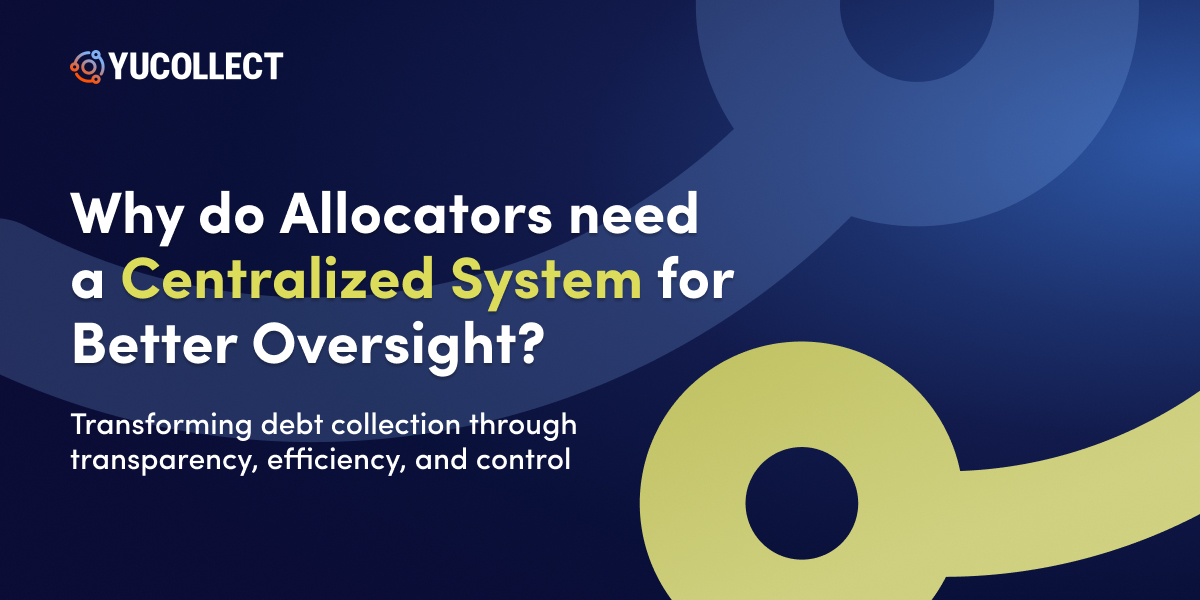
Introduction
In the rapidly evolving lending landscape of India, allocators play a crucial role in managing and overseeing the distribution of funds, collection processes, and vendor relationships. With multiple agencies, collection partners, and regulatory requirements to navigate, a decentralized approach often leads to inefficiencies, compliance risks, and poor visibility into collection performance. A centralized system can revolutionize how lenders manage collections, ensuring transparency, efficiency, and compliance.
The Challenges of a Decentralized Approach
- Lack of Real-Time Visibility: When collection efforts are managed across multiple vendors without a unified system, lenders struggle to get real-time insights into performance metrics and compliance adherence.
- Compliance Risks: Regulatory guidelines for debt collection in India are stringent, and without a centralized tracking mechanism, lenders face difficulties ensuring adherence across all collection partners.
- Operational Inefficiencies: Managing multiple vendors manually leads to delays in documentation, performance tracking, and reconciliation, resulting in increased costs and errors.
- Inconsistent Vendor Performance Management: Without a unified platform, lenders find it challenging to assess and benchmark the effectiveness of different collection agencies and their agents.
- Data Security and Integrity Issues: Decentralized systems often mean scattered data across multiple sources, increasing the risk of data breaches and inefficiencies in reporting.
How a Centralized System Enhances Oversight
A centralized collections management system offers a structured approach to overseeing collection vendors, ensuring accountability, efficiency, and compliance. Here’s how it helps:
- Real-Time Monitoring & Performance Tracking
- A centralized system provides real-time dashboards that offer insights into key collection metrics such as recovery rates, agent efficiency, and customer feedback.
- Lenders can assess the effectiveness of each agency and agent based on data-driven performance analysis.
- Enhanced Compliance Management
- Automated compliance tracking ensures that all collection partners adhere to RBI guidelines and industry best practices.
- Digital audit trails help in reducing regulatory risks and improving transparency.
- Seamless Vendor Collaboration & Management
- Lenders can onboard, monitor, and evaluate multiple collection agencies in a single platform.
- Vendor-specific performance analytics enable better decision-making and resource allocation.
- Automation of Documentation & Reporting
- Monthly documentation and reconciliation can be digitized, reducing manual effort and delays.
- Automated alerts for pending tasks help in ensuring compliance and timely execution.
- Improved Data Security & Centralized Storage
- A single platform ensures that all data remains secure, preventing information silos and unauthorized access.
- Data-driven insights enable lenders to make informed decisions and optimize collections strategies.
Collaborate with YuCollect: A Unified Collections Infrastructure
To streamline collections oversight, lenders can leverage YuCollect: A Unified Collections Infrastructure. YuCollect enables lenders to manage all collection vendors in a single platform, providing real-time visibility into performance (collections), compliance adherence at both the agency and agent levels, and automating the monthly documentation process on a digital platform. This eliminates delays, reduces manual efforts, and enhances overall efficiency in debt collections.
With a centralized system like YuCollect, lenders can ensure greater transparency, efficiency, and regulatory compliance while optimizing collections performance.









